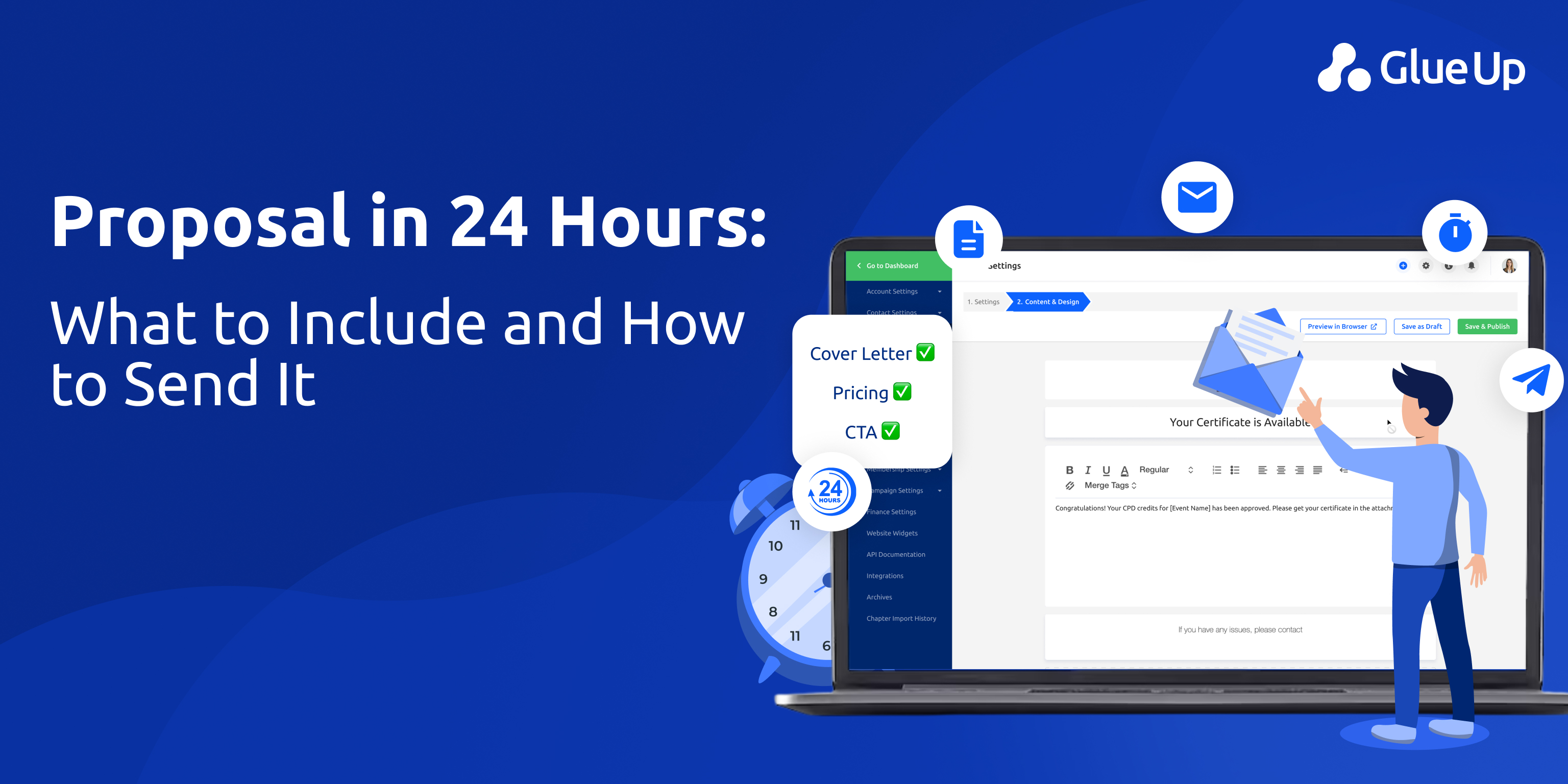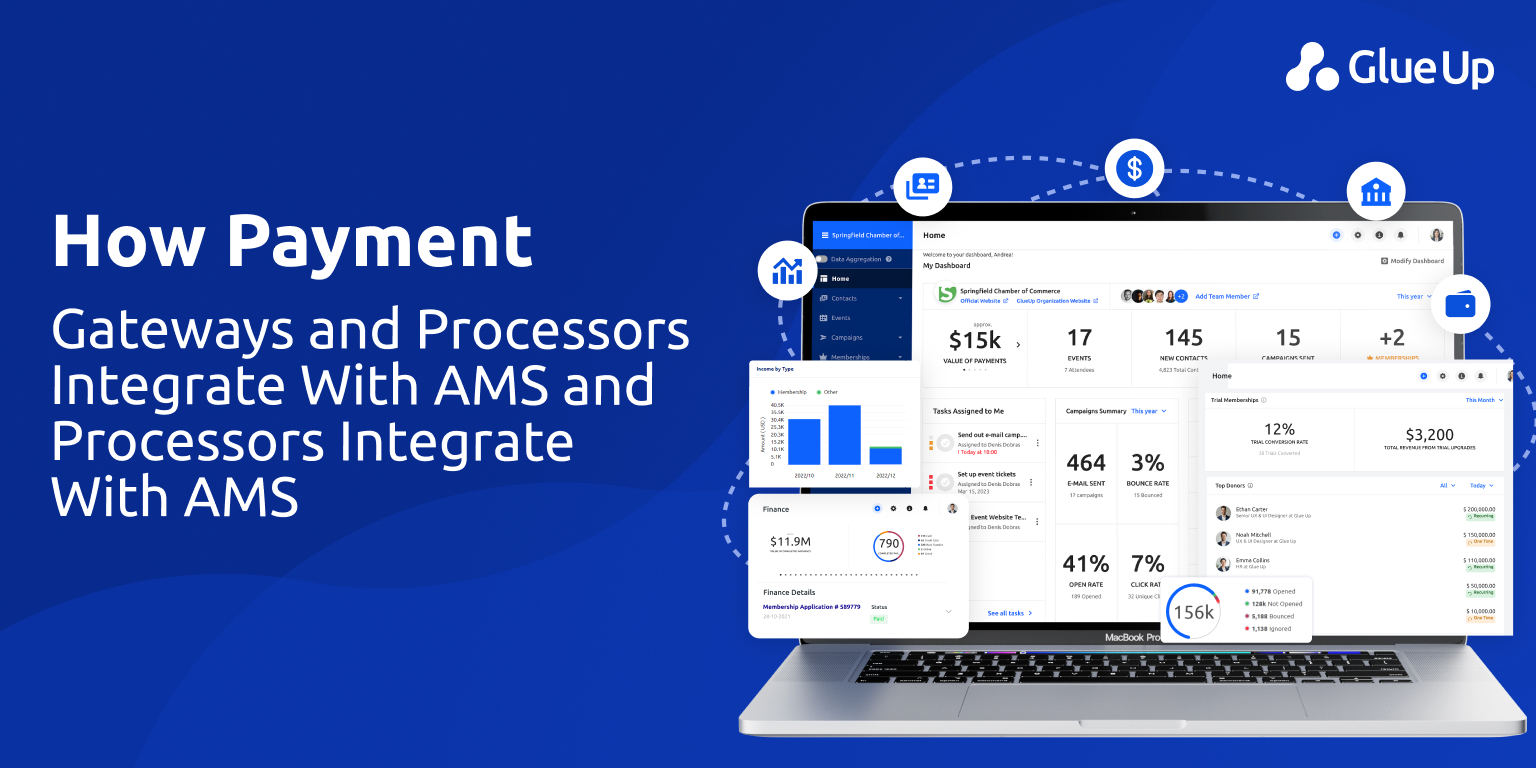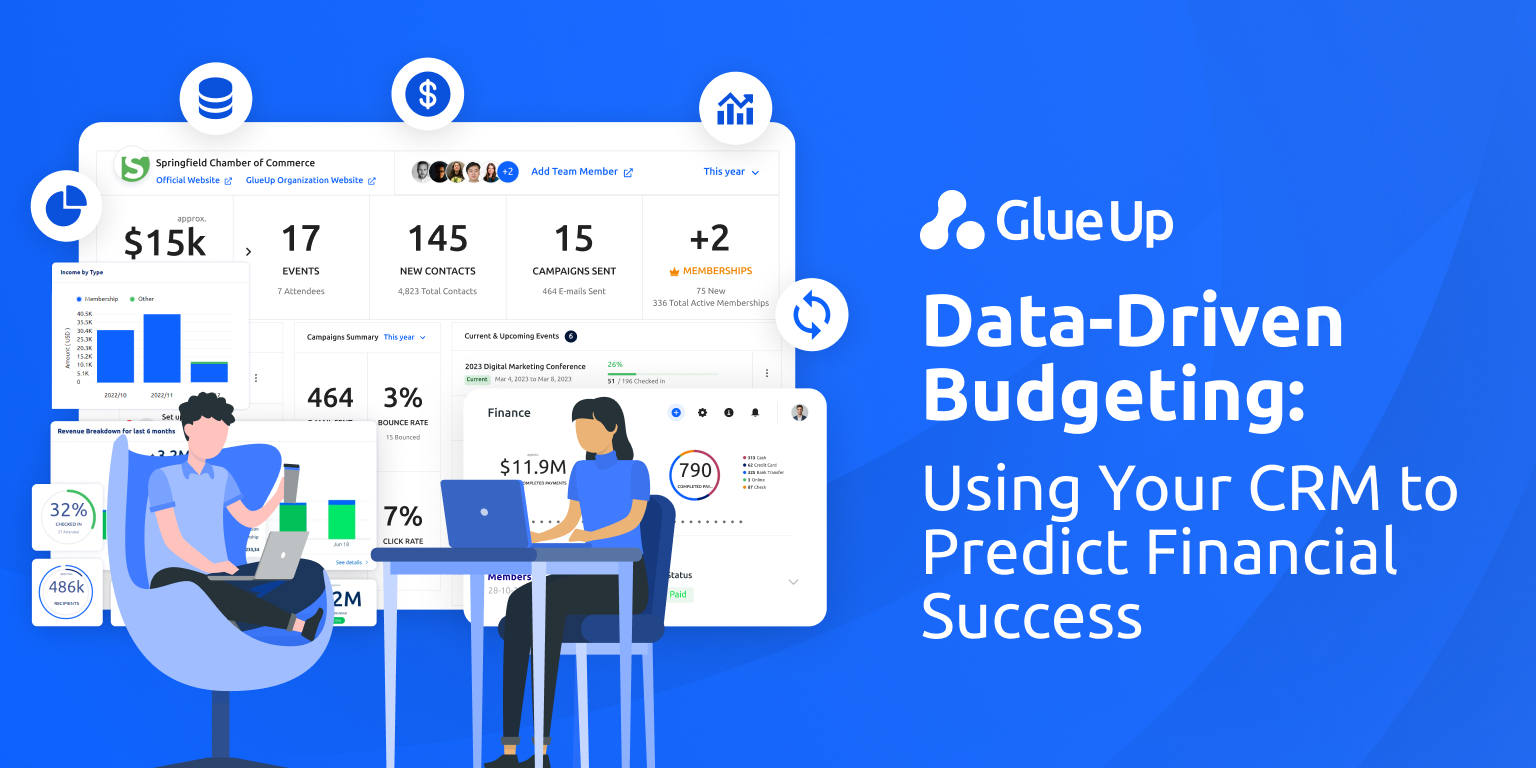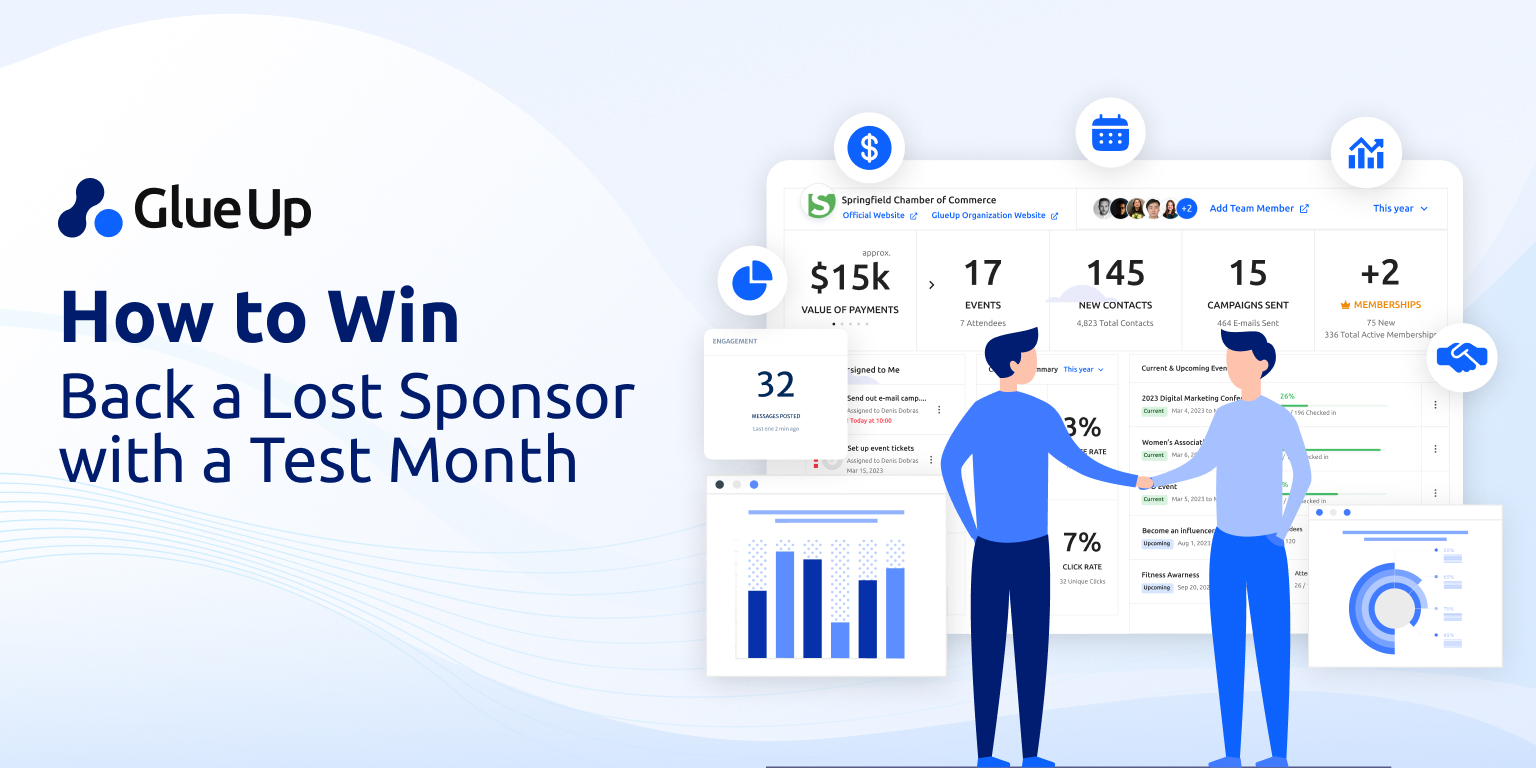
Imagine this: you closed a call with a prospective sponsor for your association yesterday. They liked your vision, asked the right questions, smiled at your stats. Then they paused and said, “Can we have the proposal by tomorrow morning?” That sentence sparks a mini panic: how do you craft a credible proposal in such tight timeframe and still look professional, strategic, mission-driven?
You’re not alone. For many member-based organizations: associations, chambers of commerce, non-profits; the window between opportunity and decision is shrinking. That’s why mastering how to deliver a high-impact, clean, tailored proposal in 24 hours becomes a powerful differentiator.
If you send a proposal in 24 hours that’s polished, client-centric and clear, you maintain momentum, build confidence and increase your odds of the win. But if you race and slip in quality or relevance, you risk undermining your relationship instead of improving it. With the right mindset, process and tools, you can do this reliably; without sacrificing credibility. Let’s walk through how.
Key Takeaways
Sending a proposal in 24 hours signals professionalism and responsiveness. Associations and chambers that move fast stand out, but the proposal must still include all critical sections: summary, challenge, solution, benefits, pricing, and next steps. Speed without quality erodes credibility.
Even under time pressure, personalization matters. A proposal in 24 hours should reference the client’s exact goals, timeline, and terminology. Using their language demonstrates that you listened and builds confidence faster than flashy design ever could.
A single, well-framed offer performs better than multiple options. Proposals with one clear action (“accept” button or reply “yes”) close faster and reduce decision friction. Short sentences, clean formatting, and visible deadlines keep momentum alive.
Automation tools like proposal software, e-signature integrations, and platforms such as Glue Up centralize data, templates, and communication, turning “rush” proposals into routine efficiency. With templates and smart workflows, 24-hour delivery becomes the norm.
The proposal isn’t over when you hit send. Timely, strategic follow-ups within 24–48 hours, paired with data insights (like when the client opened the proposal), show diligence and care. That’s how associations turn fast responses into long-term partnerships.
Quick Reads
Why the 24-Hour Turnaround Matters
When a prospect hears from you quickly, they infer three things: you listened, you care, and you’re organized. Particularly for associations and non-profits, that can mean the difference between being seen as a vendor and being seen as a strategic partner. A rapid proposal signals responsiveness, which aligns with the fast-moving demands of sponsors, grants, and event planning cycles.
Research on proposal best practices supports this: one review of over 1.3 million proposals found the companies with high close-rates (36 %) used cleaner structure, stronger visuals, clearer next-steps and timely deliverables.
Another guide emphasizes that successful proposals clearly articulate the problem, proposed solution and expected impact, and they avoid fluff.
For your membership-based organization, the urgency is real: your contact’s calendar may be full, the decision-window short, and the competition just one click away. If you can say “yes, we’ll send by tomorrow morning” and then deliver a sharp proposal, you occupy the sweet spot of momentum + professionalism.
But speed alone isn’t enough. The key is: send fast and send smart. Delivering a proposal in 24 hours requires a streamlined process, the right template, minimal decision‐points internally, and clarity to the reader. That combination creates trust.
Three Principles That Make a Quick-Turn Proposal Credible
Before we go into the blueprint, anchor yourself on these three guiding principles. If you violate them, the “proposal in 24 hours” promise becomes a liability rather than a strength.
1. Speed with Substance
You must move fast, but not at the cost of content. A rapid proposal still needs to: reflect the client’s specific need; outline what you propose; show why you’re the right organization to deliver it. According to the SJSU Writing Center, even basic business proposals should include title page, executive summary, problem statement, solution, timeline, pricing and next steps. If your “proposal in 24 hours” drops any of those, you risk looking incomplete. So, the proposal must be trimmed, focused, but complete.
2. Tailored Rather Than Generic
It might be tempting to dig up your standard “association sponsorship proposal” doc, copy in the client’s name, and hit send. Don’t. Data shows that when proposals include even 30 % custom content (client name, pain points, timeline) win-rates rise significantly.
For your target audience (associations/chambers), that means referencing their mission, specifying event dates or committee deadlines, and speaking in their language. The quicker you can adapt your template to the prospect’s context, the more authentic you appear, and the less you look like you’re mass-mailing.
3. One Clear Offer, One Next Step
When you’re sending fast, fewer choices = less friction. Good structure guides the reader to one recommended path. Research suggests that proposals with a single defined offer close at higher rates. For a 24-hour turn, your proposal should include a clear “accept” button or link, or a simple “reply yes” instruction. If you bury next steps in a paragraph of email copy, delay creeps in. Your aim: reader takes one action with minimal delay.
Your Blueprint for the Next 24 Hours
Here’s a time-mapped blueprint tailored for your membership-organization sending a proposal in 24 hours. (Day 0 = discovery call or meeting with prospect.)
Hour 0 (call ends): capture key details: decision-maker’s name, budget range or constraint, timeline/deadline, any must-have deliverables, their language (phrases they used). Set an internal note: “Proposal to be delivered [date/time]”.
Hour 0–3: select your one-page or two-page proposal template. Replace client name, insert prospect’s organization, craft the summary (two-three sentences referencing their need). Pull in standard sections (challenge, solution, benefits, timeline, pricing, next step).
Hour 3–8: refine the content. Tailor the challenge section using their words. Adjust the solution and benefits to reflect their mission or current project. Fix the timeline/ dates (kick-off, milestone, completion). Write pricing with simple clarity. Insert an acceptance link/button.
Hour 8–12: format and review. Make sure layout is clean, headings clear, no typos. Confirm the acceptance mechanism works (if e-signature or link). Add your organization’s branding/logo. Optionally insert one testimonial or case snippet (even short) to build credibility.
Hour 12–24: Send the proposal. Do a short email: “Hi [Name], thanks again for the call earlier. Attached is the proposal as discussed, we look forward to your feedback and can meet tomorrow if you’d like to walk through it. If you’re ready to proceed you can click the accept button below and we’ll schedule the kickoff. Thanks again.”
Day 1 follow-up (morning after send): Send a brief check-in if no response: “Just confirming you received the proposal we sent last evening and happy to answer any questions or walk through it tomorrow at your convenience.”
This timeline gives you internal clarity, keeps momentum, and projects professionalism.
One-Page Proposal Template You Can Use Now
Here’s a lightweight version of the proposal structure. Use this as your baseline when you’re working under a time-constraint.
[Your organization logo]
Proposal for: [Prospect Name / Organization]
Date: [mm/dd/yyyy]
Prepared by: [Your Name / Organization]
1. Summary
In two or three sentences: We propose to [deliver service X] for [client name] to help you achieve [outcome] by [date].
2. Challenge / Need
You are currently facing [client’s main pain point]. During our conversation you noted [specific detail]. We understand that [organization context] and the requirement for [client-timeline or urgency].
3. Proposed Solution
We will deliver:
[Deliverable 1] by [date]
[Deliverable 2] by [date]
Our solution leverages [differentiator] and aligns with your goal of [client outcome].
4. Benefits
• Benefit A – [Explain how it creates value]
• Benefit B – [Explain how it resolves pain]
• Benefit C – [Optional third benefit]
5. Timeline & Onboarding
Kick-off: [date]
Milestone 1: [date]
Final delivery/acceptance: [date]
Onboarding includes [intro call, documentation, support] starting [date].
6. Investment / Pricing
Service Fee: [USD amount or range]
Includes: [key inclusions]
Payment Terms: [e.g., 50% deposit, balance on delivery]
7. Next Step / Acceptance
If you’d like to proceed, please click the “Accept Proposal” button below or reply “Yes” by [date/time]. Upon acceptance we’ll schedule the kickoff call and send the agreement.
[ACCEPT PROPOSAL (link/button)]
8. Contact
[Your Name]
[Title]
[Organization]
[Phone, Email]
Use this template as your default when you must send a proposal in 24 hours. It keeps things tight, focused, and action-oriented.
Must-Have Sections for a 24-Hour Business Proposal
When you’re working under the 24-hour clock, you can’t afford fluff. But you also can’t skip the essentials. Make sure your proposal includes:
Title or cover page (clear who, what, when)
Executive summary / overview (two to three sentences summarizing the offer)
Client challenge / opportunity (shows you listened)
Proposed solution + deliverables (what you will do and when)
Benefits / outcomes for the client (why it matters)
Timeline & onboarding (dates, milestones)
Pricing / investment & terms (clear and simple)
Next step / call to action (accept link or clear instruction)
Your credentials / why you (very brief, if time allows)
Contact information
According to business-writing guides, these are the core sections of a persuasive proposal. The key difference here: you compress and tailor quickly, but include, don’t skip.
How to Tailor a Proposal Fast for a Specific Client
Tailoring is what turns a rushed proposal into a relevant one. Here are practical tactics:
Start with your template, then immediately replace client name, organization and decision-maker name. That shows you heard them.
From your discovery call capture 3–5 unique client statements: a pain point, a deadline, a priority. Insert them verbatim (or nearly) into the challenge section.
Use the client’s language. If they said “we’re aiming for 15 % membership growth in 12 months”, use exactly that phrase.
Choose just one offer (no menu of half a dozen). If you must show options, show a base offer + one upgrade. But for a 24-hour proposal you’re best served with one clear path and clearer next step.
Use minimal branding but clear structure. The reader should see your logo, your colors (if you have them) and one testimonial. Don’t invent visuals or slides if you don’t have them, simplicity wins.
Confirm the timeline in the proposal aligns with their context. If they said “we need this ready by June 15”, map key dates accordingly: kick-off June 20, milestone July 10, completion August 15 (for example).
Make the “next step” crystal: e-signature, button, “reply yes”, meeting link. Don’t say “let me know”, that’s passive.
By following this approach your proposal in 24 hours will feel thoughtful and specific.
Tools to Format and Send Proposals Quickly
Technology matters when you’re racing the clock. Here are tools that support delivering a proposal in 24 hours:
Proposal software: Platforms like Proposify (which reports a 36 % close-rate for users vs. ~20 % industry average) make it faster to format, track opens, include e-signatures and use templates.
Cloud document tools: Google Docs or Microsoft Word (online) let you collaborate with colleagues, use shared templates, and export to PDF without delay.
E-signature tools: Services such as DocuSign or Adobe Sign ensure the “accept” step is seamless.
Content libraries: Keep pre-written benefit statements, standard timelines, sample deliverables ready to drop in. This reduces decision time when you must send a proposal in 24 hours.
Tracking analytics: Know when the prospect opens the proposal, how long they spend on pages. Helps you time your follow-up.
When your organization uses a system like Glue Up with member data, event information and document automation all connected, the process of pulling client details and sending a proposal in 24 hours becomes smoother. The fewer manual steps between contact discovery and proposal delivery, the better.
What to Do After You Hit “Send”
Sending the proposal is an important milestone, but it’s not the finish line. Your follow-up strategy is part of the deal.
Within 24 hours: Send a short email acknowledging the proposal and offering to walk through it. Example: “Hi [Name], thanks again for the call earlier. I’ve attached the proposal as discussed. I’m happy to schedule 15 minutes if you’d like to walk through any part.”
Day 2–3 (if no response): Send a value-add follow-up note. Example: “While reviewing your project for the [event/grant], we thought of one additional idea and added it as a note on page 2 of the proposal. Would you like to discuss?” This reminds them you’re engaged without nagging.
Include tracking intelligence: If your proposal-tool shows the client opened page 4 (pricing) but didn’t click accept, that’s your cue. Send a brief note: “I noticed you looked at the investment section, what questions can I answer for you?”
If you receive a “not yet” answer: Ask for next steps and decision criteria: “Thanks for the update. Could you share your timeline and what you still need from our side? I’d be happy to drop a one-pager or meet briefly to help.”
After acceptance: Send a kickoff email immediately. Confirm dates, intro call, deliverables, and attach the agreement if needed. This keeps the momentum high, and bridges from “proposal in 24 hours” to “project in motion”.
A fast proposal followed by a fast and thoughtful follow-up is a signature for professionalism in the association and non-profit world.
How Glue Up Supports Your Rapid-Turn Proposal Process
For associations, chambers and member-based organizations, the gap between interest and engagement is shrinking. That means when you commit to delivering a proposal in 24 hours, your internal systems must support it.
Here’s how a platform like Glue Up helps:
Centralized member and sponsor data: When your contact’s organization, past engagement, prior sponsorship history are stored in Glue Up, you eliminate lookup time. Your proposal pulls from the same source that tracks their membership and event history.
Template libraries + automation: With one system managing your documents, you can store the “one-page proposal” template, insert key variables (client name, event date, decision-maker) and export in minutes rather than hours.
Integrated approvals and workflows: Since everything is in one ecosystem, the internal route (finance, legal, sponsorship committee) is smoother. That means you avoid bottlenecks when you need to send a proposal in 24 hours.
Tracking and follow-up built-in: Glue Up’s platform helps you monitor when a sponsor opens the proposal, triggers a follow-up reminder, or flags an opportunity. That ties into your follow-up strategy post-send.
Single app for you and them: Whether you’re sending the proposal, onboarding the sponsor, or tracking their membership/event activity, the ecosystem stays consistent. That makes the “proposal in 24 hours” model sustainable, not just a one-off sprint.
When the internal stack is aligned, the 24-hour turnaround becomes repeatable. That helps your organization build a reputation for reliability and speed (which matters in the non-profit/association world).
Start Winning Faster, Your Next Step
Here’s what you can do today to make the proposal in 24 hours model real:
Pull your one-page proposal template (or build one) and store it in your document system.
Draft a list of the 3–5 most common sponsorship/partnership types you propose for. For each one, plug in placeholder variables (client name, event date, decision-maker) so you can fill fast.
Map your internal workflow for when the go-ahead email comes: discovery call → select template → customize → send. Set internal deadlines (e.g., “draft done by X pm”, “review done by Y pm”, “send done by Z pm”).
Ensure your acceptance link or e-signature mechanism is live and tested.
Practice the follow-up workflow: send the check-in email next day, value-add email day 2/3, use tracking to guide your outreach.
By making those moves, you position your organization to act with agility, and to send a professional, tailored proposal in 24 hours whenever the moment demands.
In associations and member-based organizations, the entity that responds quickly, clearly and meaningfully often wins not simply because their idea is better, but because they moved first, well. Let your speed become part of your reputation. Then your next proposal won’t just be “sent in 24 hours”, it will be “accepted in 24 hours.”



